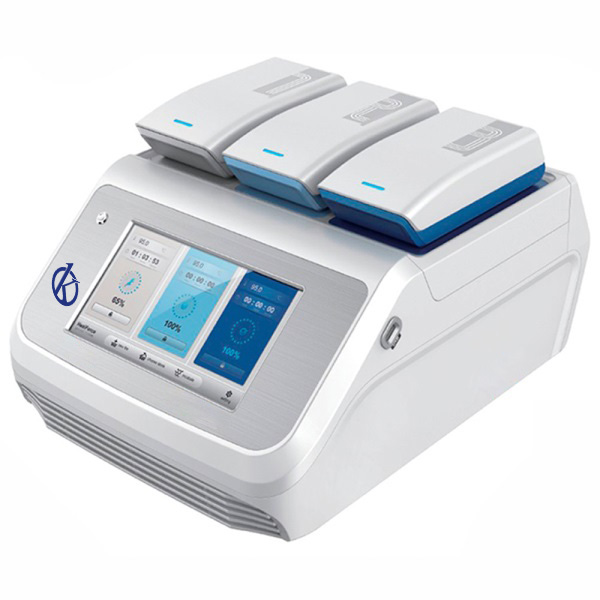Polymerase chain reaction, a chemical reaction used in molecular biology laboratories, is used to study certain changes in a gene or chromosome, which provide information to diagnose a genetic condition, or a disease, such as cancer. It is also used to identify pieces of DNA from certain bacteria, viruses, or microorganisms to establish an infection.
For this purpose, a Thermocycler is used as an innovative technological tool for the study of nucleic acids. It is characterized by being a technique of high sensitivity, reproducibility and efficiency, which generates reliable results in a short time and easy to analyze, through the in Vitro multiplication of a DNA sequence, through continuous processes of heating and cooling at very high speed (greater than 1°C/sec), which can be studied in greater detail.
Development of Polymerase Chain Reaction (PCR)
Firstly, the polymerase chain reaction is an in vitro enzymatic resistance that amplifies millions of times a specific DNA sequence during several renewed periods in which the target sequence is copied. To do this, the reaction benefits from the activity of the enzyme DNA polymerase, which has the ability to naturally synthesize DNA in cells.
For this, each cycle of PCR is carried out in three main stages:
- Denaturation. At this stage, the DNA strands are heated and separated at a temperature of 95 °C for 20-30 seconds; the time depends on the sequence of the tempering, that is, if the amount of G-C is high, it will be necessary more time to break their joints because the mating of these bases is formed by three bonds, one more than the A-T bases. Also, it depends on the speed at which the Thermocycler increases the temperature, this varies according to the model of the equipment. Achieving separate chains, which will be used as tempering for the next step.
- Hybridization. At this stage, the former are aligned to the edge of the previously separated quenching, and hybridize with their complementary sequence. For this, the hybridization temperature ranges between 50-60 °C. If the design of the former is correct and the temperature is adequate, the stability and specificity of the complex will be efficient.
- Extension. At this stage, the Taq polymerase acts on the temperate-primers complex and begins its catalytic function at a very rapid rate. The extension of the strands is in the direction of DNA synthesis, that is, from 5′ to 3′. The optimum temperature for the reaction is 72 °C, since at that temperature the enzyme is functional.
Eventually, the enlargements will have been formed with a size dictated by the total number of base pairs (bp) to be known by the researcher.
Analysis of PCR results
To detect successful sample amplification, reaction analysis is the final step in determining gene quantification. To do this, Thermocyclers are supplied from a PC with software that are generally easy to use. This software creates a series of graphs showing all the necessary data to know if the reaction was successful.
Similarly, another important step of the analysis is to choose the type of quantification that will be used to determine the precise amplification of the gene target; this means depends on the interests of the researcher. For this, there are two types of quantification: absolute and relative. The first is used to know the exact number of amplified copies of the target or the precise concentration of nucleic acids in a sample. It is used to measure viral or bacterial load in different tissues. The second is applied when changes in gene expression in different physiological states are to be evaluated.
Whatever type of quantization is chosen, the computer software is capable of performing the mathematical and statistical analyzes required for each type of quantization.
Kalstein brand thermocyclers
At Kalstein, we are equipped with the most extensive technology in trained laboratory equipment, to meet all the demands of our customers. In this case, we offer you the Thermocyclers belonging to the YR series, with general, and attractive features, such as; Solemn and elegant appearance, innovative design. Exclusive function of heat regulation of the rotary cab. Handle-module, safer and convenient for module replacement, improving exchange efficiency and long service life. Super high definition large LCD screen. Memory function in case of shutdown. Take control of your experiments. 5.7’LCD display interface. Temperature control mode, tube block.
In addition, we offer extensive advice, with the best experts, so that your purchase is ideal and at excellent prices. To learn more about our catalog, visit HERE
For more information, visit our website a HERE

